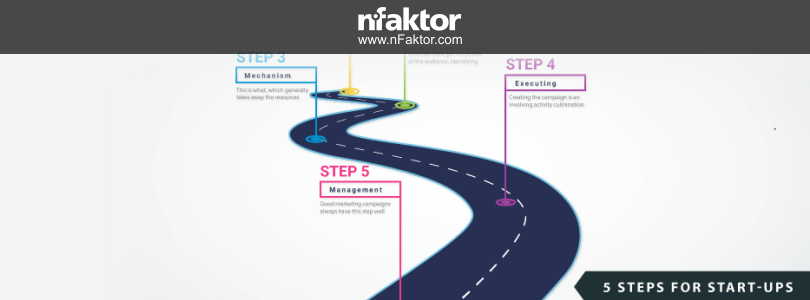Influencer marketing that focuses on influential people rather than the target market as a whole, identifies individuals who have influence over potential customers and strategizes marketing activities around them. This type of marketing has been around all along. Today, neither does it show any signs of slowing down, nor will it reach its maturity anytime in near future!
The influencer marketing industry has increased rapidly over the past few years. Influencer content is a form of testimonial advertising wherein value-added influencers such as journalists, academicians, industry analysts, professional advisers, or celebrities play the role of a potential buyer themselves. It may, in other words, be referred to as a form of paid endorsement. Influencer marketing is evolving, and it’s quite interesting to learn why influencer marketing is here to stay on.
The Advent of Visual Networking. Facebook is the best known social media network. But, one cannot ignore the power of video. YouTube has grown over the years. The key to being successful on YouTube is working directly with the influencer channels, rather than depending on the YouTube ads. One has little control over who sees their ads, but working closely with a channel, one knows with certainty who will see their content. Brands are discovering that visual networks, such as Instagram and Pinterest provide a more significant opportunity to identify influencers.
Influencers Sharing Content on Behalf of Brands. An important advantage of influencer marketing is that one is working with people who have already earned respect from an audience. How accurate the phrase, “content is king”, holds in this age of daily social media advancement! An average person sees many audios, videos or written items every day; but ignores anything that is irrelevant. But, it needs to be noted, most modern consumers are willing to see or hear a review from somebody they respect.
One may need to decide the story they want influencers to tell on their behalf, and so the companies that work with consultancies have an advantage – they have someone to remind them what type of content may perform well.
Brands Building Long-term Relationships with Influencers. We have seen influencer marketing involve brands traditionally working with influencers on specific campaigns. However, the trend is changing, and brands are now sticking with their best influencers for a longer period of time. In fact, many brands have started considering their influencers to be their partners! This has resulted in improving the influencers’ attitudes towards the brand they promote, and they associate with an increased enthusiasm.
Influencer Agencies and Platforms Simplify Process. For businesses attempting influencer marketing for the first time, wooing influencers can be a slow process that could lead to unsuccessful results. Advertising agencies have existed for many years, but it took some time for agencies to recognize the importance of online marketing. Influencer marketing began on a small scale, and as the industry matured, businesses spotted opportunities to smoothen the process.
Today, the scenario has changed, there are now quite a few specialist influencer marketing agencies that assist in creating and organizing influencer campaigns. There are also many influencer marketing platforms providing a way to find willing influencers matching the target market.
Cord-cutting over Social Media. Another trend that’s caught up and one of the main reasons for influencer marketing to have taken off is, “Cord-cutting.” The time people spend watching video on digital devices is set to rise. More consumers are now switching from TV to tablet and smartphones, especially the younger generation.
Today, even as users have more power than ever before over their viewing experiences in a crowded space, it is the relentless savviness of creators that promote a brand keeping fans engaged over social media channels. It should be noted that most users engage with their favourite social posts at least once a day! Hasn’t social media changed the relationship between companies and customers from master-servant to peer-peer? Social media is a big boost for influencer marketing – people don’t just watch; they engage by liking, commenting and tweeting in hoards!
Capturing and sharing a product, service or process; over a social media page or post enlivens and inspires a community. Doesn’t that fit in perfectly with a company’s strategy which aims to sign up customers? Indeed, a long-term relationship with an influencer creates a more meaningful interaction with the brand beyond a one-off post.
According to a marketing agency, around three fourth of consumers who were surveyed said that social networks influenced their buying decisions. That proves a point – influencers definitely tap-in by involving users with social content.
Consumers Seek Authenticity before their Buy Decisions. A consumer usually seeks greater authenticity from influencers – they try to look beyond the post to what the influencer likes! The hallmark of celebrity advertising has mainly revolved around conventional methods of endorsement and sponsorship. However, even if they are celebrities in the eyes of the world, where they need to cross the line as influencers is by how they make themselves accessible to people through social media.
Marketers need to note that the two terms – celebrity and influencer, should be kept separate, keeping in mind that the level on which to engage an audience is entirely different.
The consumer of today is smart and can tell the difference between an advertisement and a personal recommendation. Influencers add a dimension of credibility to a brand. Instead of just providing exposure to a brand, influencers lend their credibility to it. That’s what influencer marketing relies on. It finds the right balance between the two in order to retain authenticity among its audience. And this type of influencer marketing that recommends via advertisements can hardly go out of fashion, but will stay on for ages.
Drives a Higher Return on Investment. A large number of marketers use influencer marketing to grow their social media following and engagement. Most marketers use it to drive more sales. Some use it to drive traffic to their websites. And the major benefit of influencer marketing is the higher Return on Investment that it generates in terms of earned media value – a value that can be attributed to such parameters like social sharing and publicity as well as exposure to digital media.
Now we understand why brands are investing more of their time and money on influencers. In a recent study, it was found that more than half of the marketers surveyed, increased their budgets for influencer marketing in the year gone by. The massive followings that the influencers have, it’s obvious that they smartly help in reaching a bigger audience for a brand they endorse. Influencers facilitate increasing positive brand sentiment; it can yield a better return on investment.
So, it’s quite clear now, why brands choose influencer marketing as a weapon to overcome marketing challenges. Influencer marketing helps marketers stay ahead of their competitors and authenticates their brands with the target audience, along with delivering higher returns on investment. With most marketers drawing exceptional results with influencer marketing, can anyone think of ignoring it? Definitely not. Influencer marketing is always going to be there – and continue to stay for a long time!
This blog was originally published in website: Digital Doughnut



